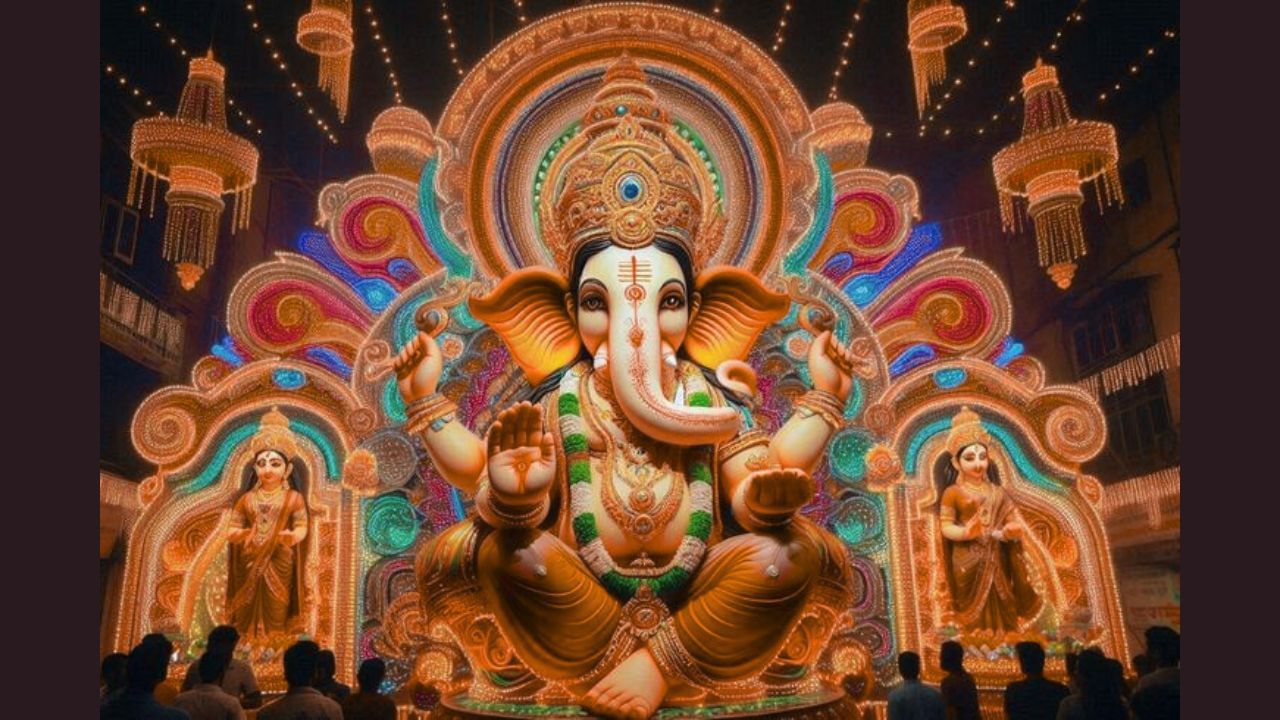Mumbai: Ganesh Chaturthi is one of the most widely celebrated festivals in India, observed with grandeur and devotion. It marks the birth anniversary of Lord Ganesha, the remover of obstacles and the harbinger of wisdom and prosperity. Across the country, devotees install idols of Ganpati in their homes and community pandals, performing elaborate rituals and prayers. The festival lasts for 10 days, with each day carrying its own unique significance and traditions.
Among the most important aspects of Ganesh Chaturthi is the attire and adornment of Lord Ganesha’s idol. More than mere decoration, the clothes, ornaments, flowers and offerings represent devotion, tradition and symbolic meaning. Every colour and element used in Bappa’s adornment carries a spiritual message, reflecting respect and love for the deity.
First three days of Ganesh Chaturthi and their adornments
Day 1: Pran-Pratishtha and traditional adornment
The first day is considered the most important. Devotees bring home Lord Ganesha’s idol during an auspicious muhurat and perform pran-pratishtha (the ritual of invoking divine presence in the idol).
Attire: Yellow or red garments are chosen. Yellow symbolises wisdom, joy and auspiciousness, while red represents strength, energy and good fortune.
Adornments: The idol is anointed with turmeric, vermilion and sandalwood paste, followed by garlands of hibiscus flowers (Ganesha’s favourite) and durva grass. Offerings of modak and laddoos are made.
Day 2: Symbol of prosperity and good fortune
The second day highlights abundance, growth and wealth.
Attire: Green or golden-coloured clothes are used. Green signifies nature, development and prosperity, while gold represents wealth and fortune. In many places, embroidered or zari-worked garments are chosen.
Adornments: Silver or gold ornaments like crowns, necklaces and armlets are placed on the idol. Fruits and dry fruits are offered as special bhog.
Day 3: Simplicity and devotion
The third day is dedicated to purity and devotion, emphasising a sattvic way of life.
Attire: White or saffron-coloured garments are chosen. White stands for peace, simplicity and purity, while saffron reflects spirituality and renunciation.
Adornments: The decorations are kept minimal yet meaningful, with garlands, sandalwood and durva. Offerings include sesame laddoos and jaggery-based sweets.
Deeper significance of Ganpati’s attire and adornment
The ritual of dressing and adorning Lord Ganesha’s idol is not simply for beauty; it holds deep cultural and spiritual value. Each colour and ornament conveys a message, symbolising wisdom, prosperity, purity and devotion. Dressing Bappa in new garments is a way of honouring him, much like welcoming a beloved guest into one’s home. This practice reflects the love, reverence and unbroken bond between devotees and their deity during Ganesh Chaturthi.
